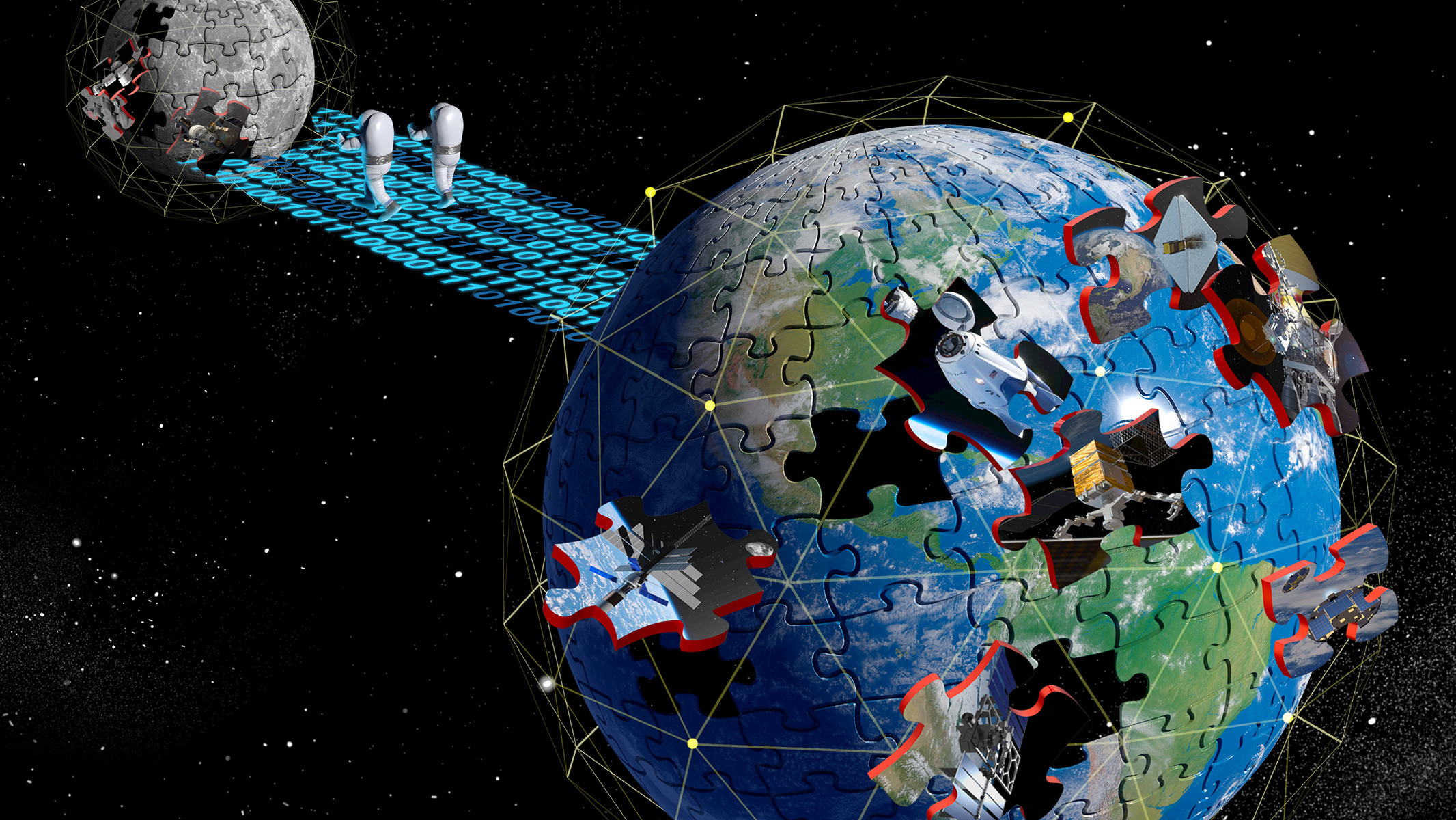
Commercial innovation is driving transformation of the space enterprise in low Earth orbit, cislunar space, the Moon, and beyond. And now that the White House has officially signaled its support, it's more important than ever that these organizations and their capabilities are aligned. How can such a fast-moving, complex endeavor be guided? A new paper from Aerospace engineering experts proposes a framework for doing so.
The paper, "Solving the Puzzle of Evolving Space Ecosystems," comes from from Ron Birk and Cris Guidi of Aerospace’s Civil Systems Group. They grapple with the fact that these ecosystems are characterized by emergent trends and behaviors that can't always be predicted or controlled.
As the paper puts it:
Unguided evolution of space ecosystems, while vibrant, poses significant risks. Without deliberate guidance, natural evolution can disrupt national missions dependent on leveraging commercial capabilities. Government agencies, tasked with leveraging commercial capabilities for missions like Artemis, must tackle this challenge. How does a government organization solve the puzzle of how to integrate diverse, rapidly evolving systems while ensuring safety, efficiency, and mission success?
The solution Birk and Guidi propose is essentially to treat the entire space enterprise as a system of systems of systems, if you will. For instance, launch is itself a system of systems, but it must also be integrated into a larger system. This gets very complex very quickly, but by dividing ecosystems into relatively discrete segments, the problem becomes soluble.
Birks and Guidi suggest a "triquetra," a set of three interdependent loops, each of which can innovate and test within itself:
- Enterprise Integration, in which entities, interactions, and plans are drafted and negotiated
- Digital Engineering, which uses digital modeling and simulation tools (like Aerospace’s Cislunar Modeling Environment) to simulate and assess these interactions
- Ecosystem engineering, using the model outcomes to guide actual deployment and observe how outcomes diverge
This approach lets the space community think big but still focus on where they fit into the chain.
“The space community has reached a point where the many individual capabilities being developed and deployed must be integrated together,” says Birk. “There is value in doing that within a common engineering environment, where companies and government organizations can work together to engineer space ecosystems and economies. The triquetra is a proven, scalable approach to accomplish this.”
Read the paper to learn more, and catch Birk moderating a panel on the topic, Commercial at the Core: Engineering an Industry-Led Economy, at the upcoming Payload Lunar & Mars Economy Summit on Oct. 14 in Houston.
